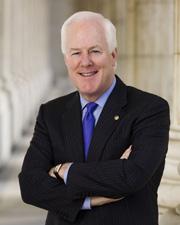0
0
0
Highway Formula Fairness Act
12/14/2023, 10:35 AM
Summary of Bill S 345
The Highway Formula Fairness Act, also known as Bill 118 s 345, is a piece of legislation currently being considered by the US Congress. The main goal of this bill is to address disparities in the way federal highway funding is allocated to states.
Currently, the formula used to distribute federal highway funds among states is based on outdated data and does not accurately reflect the current needs of each state. This has led to some states receiving more funding than they need, while others receive less than they require to maintain and improve their infrastructure.
The Highway Formula Fairness Act aims to rectify this issue by updating the formula used to distribute highway funds. The new formula would take into account factors such as population growth, traffic congestion, and road maintenance needs to ensure that funding is distributed more equitably among states. Proponents of the bill argue that this change is necessary to ensure that all states have the resources they need to maintain safe and efficient transportation systems. They believe that the current formula unfairly advantages some states over others and that the Highway Formula Fairness Act would help to level the playing field. Opponents of the bill, however, argue that changing the formula could result in some states losing funding, which could have negative consequences for their infrastructure. They also raise concerns about the potential for political manipulation of the new formula to benefit certain states over others. Overall, the Highway Formula Fairness Act is a complex piece of legislation that seeks to address longstanding disparities in federal highway funding allocation. Its fate in Congress remains uncertain, but it has sparked important debates about how best to ensure that all states have the resources they need to maintain their transportation infrastructure.
Currently, the formula used to distribute federal highway funds among states is based on outdated data and does not accurately reflect the current needs of each state. This has led to some states receiving more funding than they need, while others receive less than they require to maintain and improve their infrastructure.
The Highway Formula Fairness Act aims to rectify this issue by updating the formula used to distribute highway funds. The new formula would take into account factors such as population growth, traffic congestion, and road maintenance needs to ensure that funding is distributed more equitably among states. Proponents of the bill argue that this change is necessary to ensure that all states have the resources they need to maintain safe and efficient transportation systems. They believe that the current formula unfairly advantages some states over others and that the Highway Formula Fairness Act would help to level the playing field. Opponents of the bill, however, argue that changing the formula could result in some states losing funding, which could have negative consequences for their infrastructure. They also raise concerns about the potential for political manipulation of the new formula to benefit certain states over others. Overall, the Highway Formula Fairness Act is a complex piece of legislation that seeks to address longstanding disparities in federal highway funding allocation. Its fate in Congress remains uncertain, but it has sparked important debates about how best to ensure that all states have the resources they need to maintain their transportation infrastructure.
Congressional Summary of S 345
Highway Formula Fairness Act
This bill modifies the formula that the Department of Transportation uses to apportion federal highway funds among the states for the national highway performance program, the surface transportation block grant program, the highway safety improvement program, the congestion mitigation and air quality improvement program, the national highway freight program, and metropolitan transportation planning.
Read the Full Bill
Current Status of Bill S 345
Bill S 345 is currently in the status of Bill Introduced since February 9, 2023. Bill S 345 was introduced during Congress 118 and was introduced to the Senate on February 9, 2023. Bill S 345's most recent activity was Read twice and referred to the Committee on Environment and Public Works. as of February 9, 2023
Bipartisan Support of Bill S 345
Total Number of Sponsors
1Democrat Sponsors
0Republican Sponsors
1Unaffiliated Sponsors
0Total Number of Cosponsors
4Democrat Cosponsors
2Republican Cosponsors
2Unaffiliated Cosponsors
0Policy Area and Potential Impact of Bill S 345
Primary Policy Focus
Transportation and Public WorksPotential Impact Areas
- Air quality
- Government trust funds
- Regional and metropolitan planning
- Roads and highways
- Transportation programs funding
- Transportation safety and security
Alternate Title(s) of Bill S 345
Highway Formula Fairness Act
Highway Formula Fairness Act
A bill to modify a provision relating to adjustments of certain State apportionments for Federal highway programs, and for other purposes.
Comments
Sponsors and Cosponsors of S 345
Latest Bills
Providing for consideration of the bill (H.R. 2550) to nullify the Executive Order relating to Exclusions from Federal Labor-Management Relations Programs, and for other purposes.
Bill HRES 432December 11, 2025
Southcentral Foundation Land Transfer Act of 2025
Bill HR 3620December 11, 2025
Enduring Justice for Victims of Trafficking Act
Bill S 2584December 11, 2025
VSAFE Act of 2025
Bill S 2683December 11, 2025
Veterans National Traumatic Brain Injury Treatment Act
Bill S 2737December 11, 2025
CARING for Our Veterans Health Act of 2025
Bill S 2397December 11, 2025
Health Records Enhancement Act
Bill S 2333December 11, 2025
RESPECT Act of 2025
Bill S 2807December 11, 2025
Review Every Veteran’s Claim Act of 2025
Bill S 1657December 11, 2025
ARCA Act of 2025
Bill S 1591December 11, 2025


